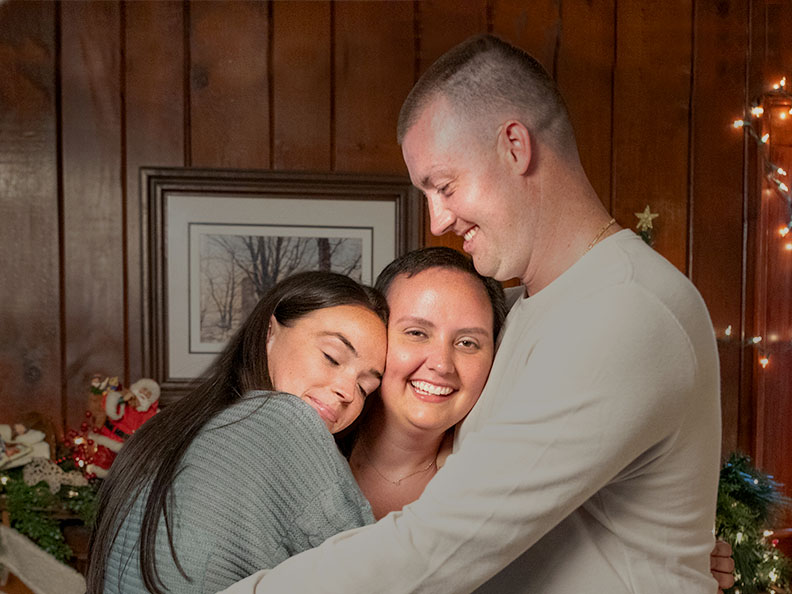Your gift is 100% tax deductible
Palliative Therapy for Gallbladder Cancer
Palliative care is supportive care. It's aimed at preventing and treating symptoms or problems caused by cancer. Palliative care is used with every type of cancer treatment at every stage of gallbladder cancer. It includes medicines to control pain and prevent nausea, and ways to maintain the flow of bile where a tumor could block it. Palliative care focuses on helping you feel better. It's not used to cure the cancer.
When are palliative treatments used for gallbladder cancer?
If gallbladder cancer has spread too far to be removed by surgery, doctors may focus on palliative treatments. However, palliative treatments can be used throughout cancer treatment. For instance, pain medicines and drugs to control nausea or itching might be used to help you feel better. Radiation and chemotherapy can also be used to help relieve problems caused by the tumor(s). Sometimes, surgery or other treatments are used to help you feel better or to help prevent problems the cancer might cause. Because gallbladder cancers tend to grow and spread quickly, doctors try to use palliative therapies that are less likely to have unpleasant short-term side effects whenever possible. Your cancer care team will talk with you about the pros and cons of all the treatments that might help you.
Maintaining your quality of life is an important goal. Please don’t hesitate to discuss pain, other symptoms, or any quality-of-life concerns with your cancer care team.
Common palliative care treatments used for gallbladder cancer
Biliary stent or biliary catheter
If cancer is blocking a duct that carries bile to the small intestine from the gallbladder or liver, it can lead to jaundice (yellowing of the skin and eyes) and other problems, like infection and liver failure. A small tube (stent) or a catheter can be put into the bile duct or the gallbladder to help the bile drain.
- A stent is a small metal or plastic tube that's put through the blockage in the duct. It keeps the duct open to allow the bile to drain into the small intestine.
- A catheter is a thin, flexible tube that's put in through the skin of the abdomen (belly). One end of the tube is put into a bile duct and the other is outside the body. This lets the bile drain into a bag. The bag can be emptied when needed. If you have a catheter, your doctor or nurse will teach you how to care for it.
These procedures can be done as part of a cholangiography procedure or sometimes during surgery. They're often done to help relieve or prevent symptoms in more advanced cancers, but they can also be done to help relieve jaundice before potentially curative surgery. This helps lower the risk of complications from the surgery.
The stent or catheter may need to be replaced every few months to help reduce the risk of infection and gallbladder inflammation. It will also need to be replaced if it becomes clogged.
Biliary bypass
In people who are healthy enough, a surgery called biliary bypass is another option to allow bile to drain from the liver and gallbladder. There are different biliary bypass operations. Deciding which one to use depends on where the blockage is.
In these procedures, the surgeon creates a bypass around the tumor blocking the bile duct by connecting part of the bile duct before the blockage with a part of the duct that lies past the blockage, or with the intestine itself. For instance:
- A choledochojejunostomy joins the common bile duct to the jejunum (the second part of the small intestine).
- A gastrojejunostomy (also known as a gastric bypass) joins the stomach directly to the jejunum.
- A hepaticojejunostomy joins the duct that carries bile from the liver to the jejunum.
Sometimes these operations can be done using special long surgical tools put through several small holes made in the abdomen (belly). This is called laparoscopic or keyhole surgery.
A biliary bypass can often give longer-lasting relief than a stent, which might need to be cleaned out or replaced. Still, this can be a major operation, so it’s important that you're healthy enough to withstand it and that you talk with your doctor about the possible benefits and risks before you have the surgery.
More information about palliative care
To learn more about how palliative care can be used to help control or reduce symptoms caused by cancer, see Palliative Care.
To learn about some of the side effects of cancer or treatment and how to manage them, see Managing Cancer-related Side Effects.
- Written by
- References

Developed by the American Cancer Society medical and editorial content team with medical review and contribution by the American Society of Clinical Oncology (ASCO).
Abou-Alfa GK, Jarnagin W, Lowery M, D’Angelica M, Brown K, Ludwig E, Liver and bile duct cancer. In: Neiderhuber JE, Armitage JO, Doroshow JH, Kastan MB, Tepper JE, eds. Abeloff’s Clinical Oncology. 5th ed. Philadelphia, PA. Elsevier; 2014:1373-1395.
National Comprehensive Cancer Network. NCCN Clinical Practice Guidelines in Oncology: Biliary Tract Cancers. v.1.2025 - March 20, 2025. Accessed at https://www.nccn.org/professionals/physician_gls/pdf/btc.pdf on April 17, 2025.
Rizzo GEM, Carrozza L, Rancatore G, Binda C, Fabbri C, Anderloni A, Tarantino I. The Role of Endoscopy in the Palliation of Pancreatico-Biliary Cancers: Biliary Drainage, Management of Gastrointestinal Obstruction, and Role in Relief of Oncologic Pain. Cancers (Basel). 2023 Nov 10;15(22):5367. doi: 10.3390/cancers15225367. PMID: 38001627; PMCID: PMC10670525.
Schepis T, Boškoski I, Tringali A, Bove V, Costamagna G. Palliation in Gallbladder Cancer: The Role of Gastrointestinal Endoscopy. Cancers (Basel). 2022 Mar 26;14(7):1686. doi: 10.3390/cancers14071686. PMID: 35406458; PMCID: PMC8997124.
Last Revised: May 16, 2025
American Cancer Society medical information is copyrighted material. For reprint requests, please see our Content Usage Policy.
American Cancer Society Emails
Sign up to stay up-to-date with news, valuable information, and ways to get involved with the American Cancer Society.



